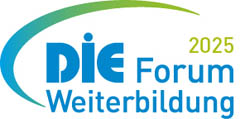Not Such New News for Parts of the Future
Berlin (GER), December 2008 - Chaired by Louisa Dale of JISC (UK), one of the sessions at ONLINE EDUCA Berlin focused on Innovative Learning Design. With "a swarm of people" waiting outside commented Dale, the session got off to a promising start, with its offer of insights into the future of technologies and processes of learning, collaboration and innovation. The products and concepts presented, however, turned out to be rather well known.
Lead session participants were Malcom Kay and Ken Swain of Digital Knowledge Exchange and the Design Academy (both UK), Prof. Ulrich Weinberg of the School of Design Thinking in Potsdam, Germany, and Dr. Peter Dolog of Aalborg University, Denmark. All of them are currently working on projects with a focus on collaboration and product innovation.
Kay and Swain shared a perspective, presenting 4D design in motion that - viewed with 3D glasses - offers screen images with excellent stereoscopic depth. The term 4D was deliberately chosen and is defined by Kay as offering "interactivity in space", freeing three-dimensional images from the screen and allowing them to be moved around and changed in size. In contrast, 3D is what can be achieved with any CAD (Computer Aided Design).
Very cool images, yes, and maybe it's a way to entice young students to learn the periodic system when it has stereoscopic molecules wildly swarming around it. Or perhaps it's a good way to support learning all the parts of an engine - when you are able to look at each one from all sides and can hardly resist the impulse to touch them. Yes, the idea is to "play them into their own game", as Kay says, referring to the young learners of Generation Y. But is this really news? Maybe the planned largest 3D and 4D online library focusing on education and training will be.
Prof. Ulrich Weinberg gave an inspiring presentation on "Design Thinking" and the School of Design Thinking established at Stanford University in 2005 and in Potsdam in 2007, both supported by Hasso Plattner of SAP. The "D-School" in Potsdam clearly offers an enviable place for learning and creating. Excellent students from the Berlin area have the opportunity to become part of the D-School for two days a week and develop design solutions in an open process that engages seriously with a user perspective.
The learning environment is excellent, the commitment to interdisciplinarity obvious, and the process truly collaborative. These are known concepts taken seriously, but is this really new? A typical group workspace consists of a mobile table, an integrated computer, material and tool boxes, post-its and white boards - all of which are classic tools of workshop facilitation and group communication. Future design innovations might come out of the "D-School", but the elements of which it is built are all well known.
Dr. Dolog had the difficult task of closing the session with a presentation about the European project "idspace", which started only recently. With several international partners, it sets out to create shared online spaces for distributed teams that work in a collaborative, creative way. Again, we encounter known terms and approaches. But this may be just the beginning, so keep your eyes open for new developments during the next two years of idspace.








